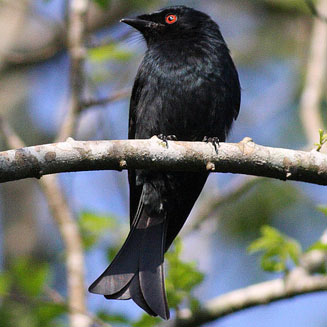
Dicrurus ludwigii
TAXONOMY
Edolius ludwigii A. Smith, 1834, Port Natal = Durban, South
Africa. Five subspecies.
OTHER COMMON NAMES
French: Drongo de Ludwig; German: Geradschwanzdrongo;
Spanish: Drogo de Cola Cuadrada.
PHYSICAL CHARACTERISTICS
7–7.5 in (18–19 cm); 0.8–1.3 oz (25–35 g). Smallest of drongos,
plain headed, red-eyed, and all black, glossed purplish or
green, with a characteristically short and squarish tail; females
are similar to males or duller, and immatures dull in both sexes
and speckled pale gray on mantle and breast.
DISTRIBUTION
Endemic to Africa where patchy in
DISTRIBUTION
: subspecies
sharpei occurs in a narrow band through the west and central
tropics from Guinea to Uganda, western Kenya, and other minor
races in central Angola, Zambia-Zaire, southeast Somalia,
eastern Tanzania, and coastal Mozambique to the southeast
Cape Province.
HABITAT
Middle and lower strata of gallery forest, moist thicket,
wooded glades, primary rainforest, and denser woodland from
sea-level up to 6,600 ft (2,000 m) above sea level in the tropics.
D. l. sharpei, in particular, keeps to gallery forests and woodlands
around the fringe of primary rainforest, being replaced
within by the shining drongo (D. atripennis).
BEHAVIOR
Usually permanently territorial, in pairs or family groups.
Though more retiring than other African drongos, it still forages
by sallying, sits on exposed vantage perches with tail
drooped and twitched from side to side, defends nest pugnaciously,
and calls often and rather loudly: repeated single-note
upslurred or down-slurred whistles and buzzes. Song duets are
a quiet and rapidly delivered medley of short whistles and liquid
chattery notes.
FEEDING ECOLOGY AND DIET
Aerial insectivore, often accompanying foraging bands of mixed
species of birds. Diet mainly of rather large insects: moths,
grasshoppers, mantids, and beetles; also exploits termite emergences.
REPRODUCTIVE BIOLOGY
Breeds April through November north of equator and September
through April in south. Nest a small, neat saucer of lichen
and dry stems bound thickly with cobweb at rim, 2.9 in diameter
x 1 in deep (75 mm x 25 mm), suspended by rim in horizontal
fork at branchlet extremity 6.6–26 ft (2–8 m) above
ground; eggs two to three per clutch, 0.8–0.9 x 0.6–0.7 in
(20–23 x 15–16.5 mm), white to pale buff, spotted with lilac
and brown, mostly at larger end.
CONSERVATION STATUS
Not threatened.
SIGNIFICANCE TO HUMANS
None known.
Photo Gallery of - Square-tailed drongo
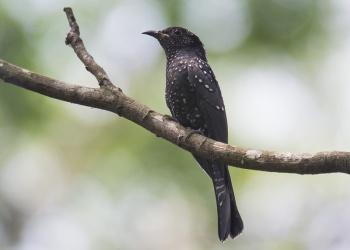
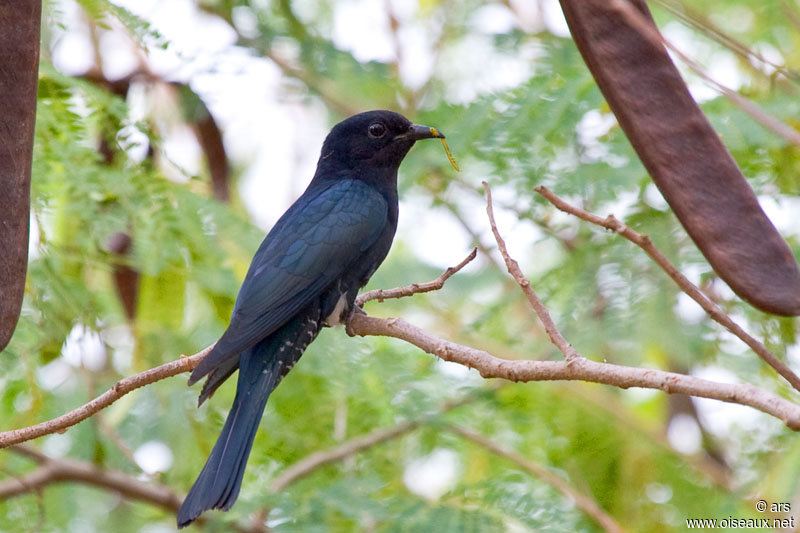
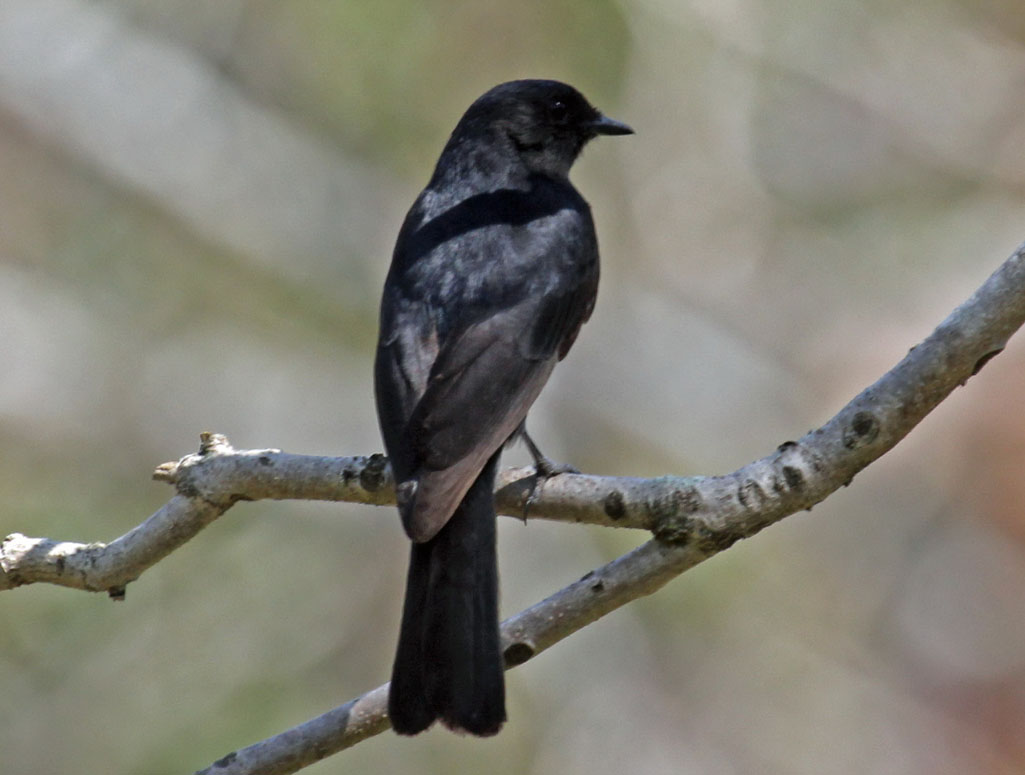
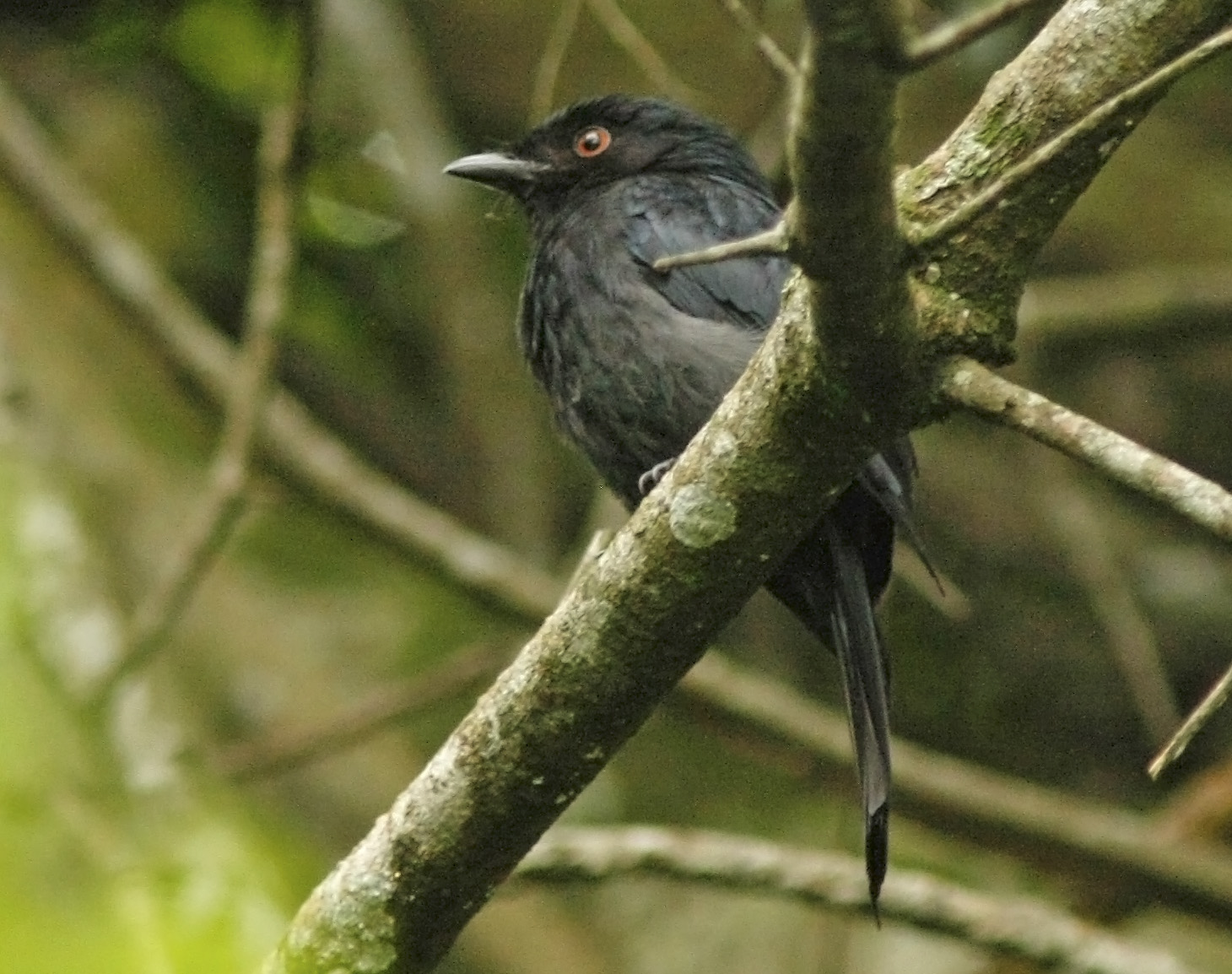
 Animalia Life
Animalia Life